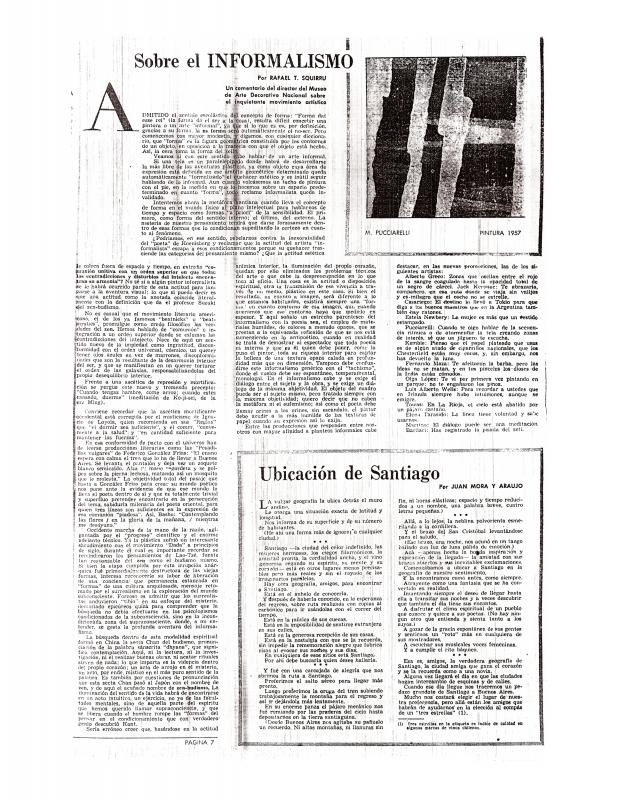Rafael F. Squirru (Buenos Aires, 1925) Argentinean poet and art critic, studied law at the universities of Buenos Aires and Edinburg. He was the founder and first director of the Museum of Modern Art in Buenos Aires in 1956. In 1957, he founded Ediciones del Hombre Nuevo [New Man’s Editions]. Squirru was the main exponent of the Movimiento informalista [Informalist Movement], both as an art critic and in his institutional endeavors. He occupied many cultural posts in the Cancillería Argentina [Argentinean Chancellery], upon the request of the developmental government of Arturo Frondizi (1958–62), where he promoted the works of, among other artists, Antonio Berni. He was the cultural officer of the OEA [OAS (Organization of American States)] (1963–70). He was also collaborator for the newspaper Clarín [The Bugle] until the beginnings of the eighties, when he started to publish his art critiques in La Nación [The Nation]. This is a central document in the dissemination of the Informalist movement in Argentina, because it centers on one of his interpretations in its association with Eastern spiritualism, particularly Zen mysticism. The Informalist movement had a strong impact on artistic media, beginning by the end of the fifties with the works of Alberto Greco, Enrique Barilari, Kenneth Kemble, and Luis Alberto Wells, among others. This article is a modified reproduction in the text and the listing of artists linked by Rafael T. Squirru, “Sobre el informalismo” [About Informalism], Clarín, August 16, 1959, 4th. Section, p. 7. (code 741850) A comparison of both publications of the document lets us inquire about the selection made by the movement itself for the relevant exhibitions. In the Clarín journal and the exhibition at the Sivori Museum, the critic includes Kemble, Greco, Barilari, Wells, Mario Pucciarelli, Fernando Maza, Olga López, and Towas (Tomás Monteleone). In Clarín only, the following are also mentioned: Elena Tarasido, Jorge Martín (listed as Martino), Estela Newbery, and Florencio Méndez-Casariego, who are excluded from the exhibition at the Sivori Museum; [they are] made up of those who had exhibited jointly in the Galería Van Riel [Van Riel Gallery] in July 1959, plus the incorporation of photographer Jorge Roiger, thus consolidating the Informalist Movement group. Another relevant aspect of the comparison between both texts is the change in the use of poetic metaphor to define the artists in Clarín, on one side, and on the other, proposing a brief formal reading in the presentation of the exhibition at the Sivori Museum.

